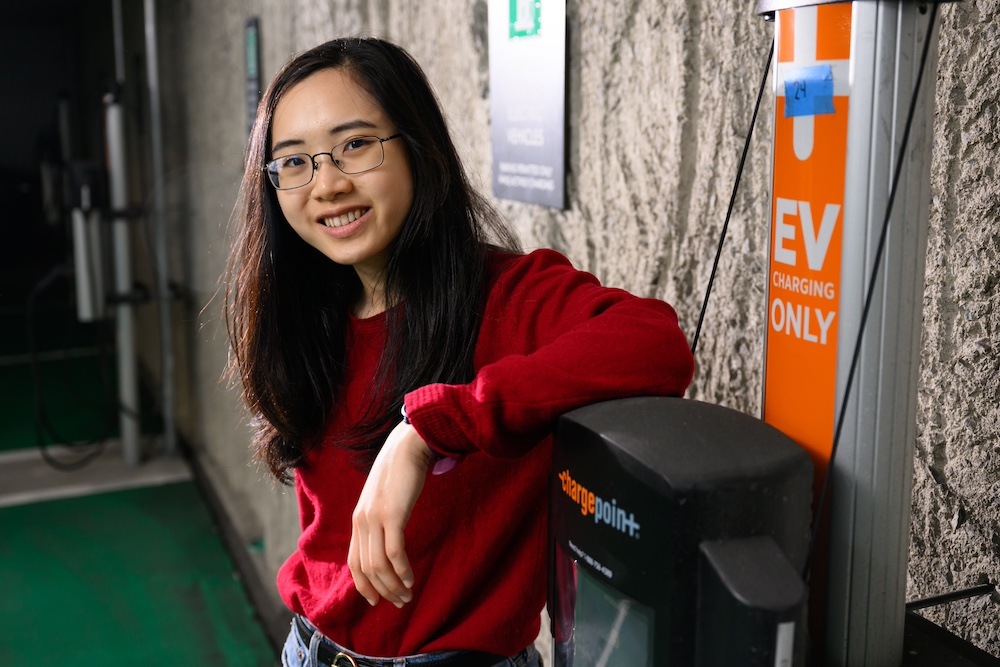
Ross Parmly on Unsplash
This spring, the MIT Energy Initiative (MITEI) Seed Fund Program awarded six grants to support promising, innovative energy research projects. Each project will receive $150,000 over a two-year period to explore new energy-related ideas and open up new avenues of research aimed at speeding the clean energy transition and stabilizing the climate.
“If we are to achieve net-zero emissions, we need to encourage high-risk, high-reward innovation and research,” says William H. Green, the director of the MIT Energy Initiative and the Hoyt C. Hottel Professor of Chemical Engineering.
This year’s winning projects tackle a breadth of challenges that will prove critical in combatting the global climate crisis—from decarbonizing the production of the chemical ethylene, to improving sustainable aviation fuel to be a viable replacement for jet fuel, to enabling a trusted market for ocean carbon credits by accurately quantifying marine carbon dioxide removal to help leverage the planet’s largest carbon sink.
The MITEI Seed Fund Program fosters collaboration and innovation across MIT, embracing an “all-hands-on-deck” approach to tackling the world’s climate challenges. This year’s call for proposals generated 51 submissions from 63 different PIs across 21 departments, labs, and centers. To date, this program has supported more than 220 projects with $28.8 million. This funding primarily comes from MITEI’s Founding and Sustaining Members, supplemented by philanthropic donations.
Brief descriptions of each of the six winning projects and their principal investigators (PIs) follow.
Decarbonizing ethylene production
The production of ethylene, an important chemical that can be used to make plastics and other chemical compounds, generates the second-highest amount of greenhouse gas emissions of any single process in the chemical industry. This project has the potential to dramatically lower the carbon footprint of ethylene production by using electrochemistry to convert ethane to ethylene without carbon emissions.
PI: Yogesh Surendranath, professor of chemistry
A new concept for low-cost, grid-scale energy storage
This project will develop a novel multisolvent osmotic flow battery (MOFB) that uses chemical potential gradients to store energy in fully miscible (the ability to mix fully without separation) multisolvent mixtures. By using widely available solvents and low-cost, size-selective membranes in densely packed modules, MOFBs have the potential to lower the cost of grid-scale energy storage. Additionally, as they do not require large amounts of supply-constrained materials, MOFBs could improve grid resilience while minimizing geopolitical risks to supply chains.
PI: John Lienhard, the Abdul Latif Jameel Professor of Water and Food and founding director of the Abdul Latif Jameel Water and Food Systems Lab
Boosting lithium-ion battery design
Current lithium-ion battery designs face important limitations when it comes to high-power and high-energy applications, such as fast-charging and electric aviation. This project will design a new battery architecture that will feature a circulating electrolyte that boosts battery energy and power density, expanding operational capabilities and improving overall battery safety.
PI: Fikile Brushett, associate professor of chemical engineering
Revolutionizing sustainable aviation fuel development
If the aviation industry is to meet its target of net-zero greenhouse gas emissions and replace petroleum-based jet fuel by 2050, sustainable aviation fuel (SAF) will be key. This seed fund project aims to revolutionize SAF development by producing oils through the pyrolysis of plastics and biowastes. Subsequent analysis will be used to develop a model capable of tuning the pyrolysis conditions for a dynamic input waste stream (for example, biowaste vs plastic or combinations of the two) that will achieve high-performing, environmentally optimized SAF.
PI: Desirée Plata, associate professor of civil and environmental engineering
Biosynthesis to support electrocatalytic CO2 reduction
The prevalence of carbon dioxide (CO2) in our environment makes it a significant contributor to climate change, but this also makes it a promising renewable feedstock for chemical production. To repurpose that CO2, this project aims to improve electrocatalytic CO2 reduction (ECR), a conversion process that is currently very energy intensive and reliant on organic solvents and dangerous chemicals. The team plans to leverage the electroactive microbe Shewanella oneidensisto enable green, scaled synthesis of the nanoparticles needed for efficient ECR.
PI: Ariel Furst, assistant professor of chemical engineering
Enabling trusted ocean carbon credits
As the planet’s largest carbon sink for anthropogenic carbon dioxide emissions, the ocean could be a powerful tool to mitigate climate change. This project will explore the potential of a GPU (graphics processing unit)-based, open source, ocean modeling system currently being developed by a research team in the MIT Department of Earth, Atmospheric, and Planetary Systems called Oceananigans. The goal is for this new, transparent carbon capture modeling system to greatly surpass options currently available in both speed and cost-effectiveness and to help enable a global market for trustworthy ocean carbon credits.
PI: Thomas Peacock, professor of mechanical engineering





